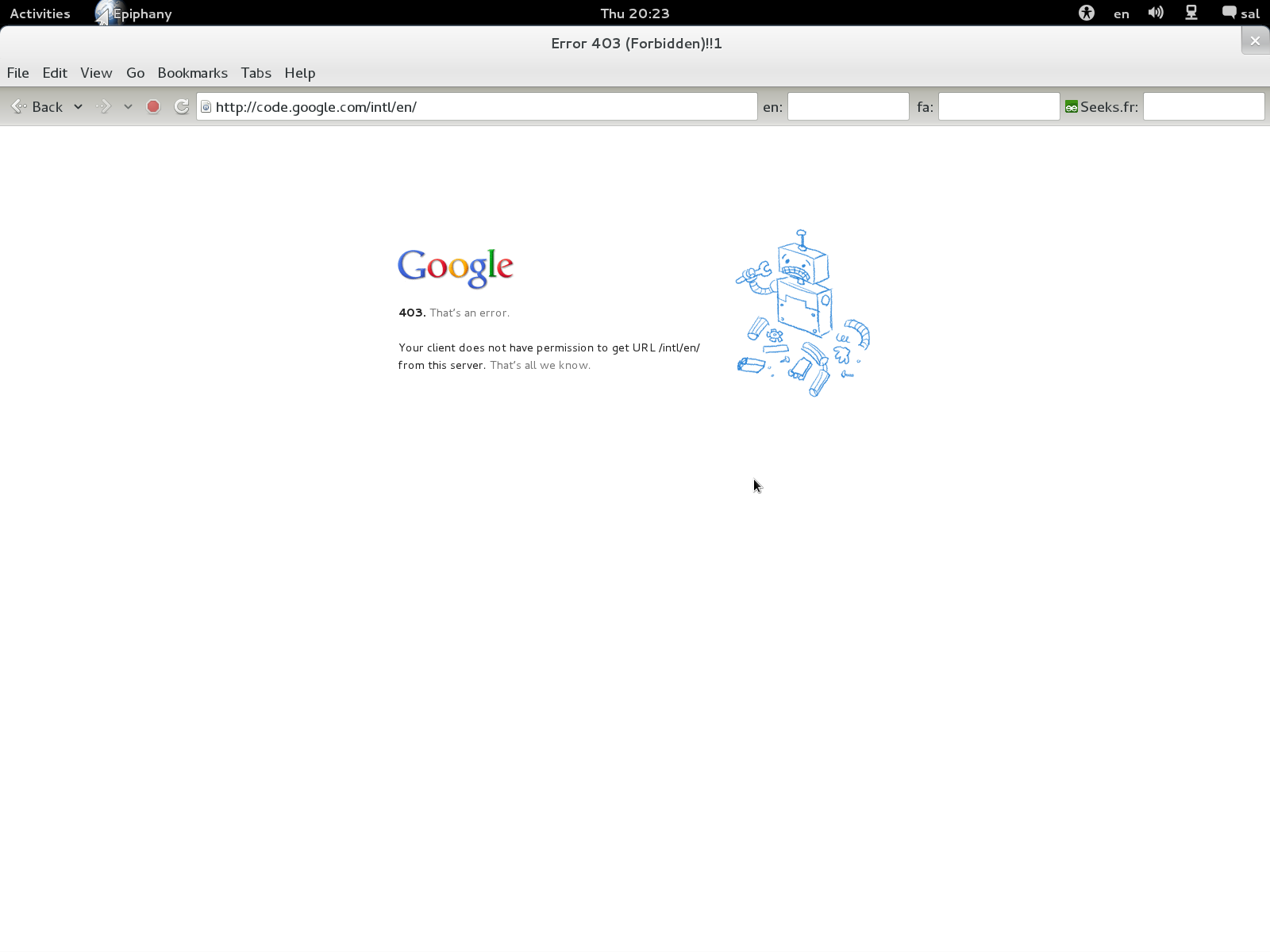|
JSDoc
JSDoc is a markup language used to annotate JavaScript source code files. Using comments containing JSDoc, programmers can add documentation describing the application programming interface of the code they're creating. This is then processed, by various tools, to produce documentation in accessible formats like HTML and Rich Text Format. The JSDoc specification is released under CC BY-SA 3.0, while its companion documentation generator and parser library is free software under the Apache License 2.0. History JSDoc's syntax and semantics are similar to those of the Javadoc scheme, which is used for documenting code written in Java. JSDoc differs from Javadoc, in that it is specialized to handle JavaScript's dynamic behaviour. An early example using a Javadoc-like syntax to document JavaScript was released in 1999 with the Netscape/Mozilla project Rhino, a JavaScript run-time system written in Java. It included a toy "JSDoc" HTML generator, versioned up to 1.3, as an example ... [...More Info...] [...Related Items...] OR: [Wikipedia] [Google] [Baidu] |
Comparison Of Documentation Generators
The following tables compare general and technical information for a number of documentation generators. Please see the individual products' articles for further information. Unless otherwise specified in footnotes, comparisons are based on the stable versions without any add-ons, extensions or external programs. Note that many of the generators listed are no longer maintained. General information Basic general information about the generators, including: creator or company, license, and price. Supported formats The output formats the generators can write. Other features See also * Code readability * Documentation generator * Literate programming Literate programming is a programming paradigm introduced in 1984 by Donald Knuth in which a computer program is given as an explanation of its logic in a natural language, such as English, interspersed (embedded) with snippets of macros and t ... * Self-documenting code Notes References {{DEFAULTSORT:Com ... [...More Info...] [...Related Items...] OR: [Wikipedia] [Google] [Baidu] |
Rhino (JavaScript Engine)
Rhino is a JavaScript engine written fully in Java and managed by the Mozilla Foundation as open source software. It is separate from the SpiderMonkey engine, which is also developed by Mozilla, but written in C++ and used in Mozilla Firefox. History The Rhino project was started at Netscape in 1997. At the time, Netscape was planning to produce a version of Netscape Navigator written fully in Java and so it needed an implementation of JavaScript written in Java. When Netscape stopped work on ''Javagator'', as it was called, the Rhino project was finished as a JavaScript engine. Since then, a couple of major companies (including Sun Microsystems) have licensed Rhino for use in their products and paid Netscape to do so, allowing work to continue on it. Originally, Rhino compiled all JavaScript code to Java bytecode in generated Java class files. This produced the best performance, often beating the C++ implementation of JavaScript run with just-in-time compilation (J ... [...More Info...] [...Related Items...] OR: [Wikipedia] [Google] [Baidu] |
Sublime Text
Sublime Text is a shareware text and source code editor available for Windows, macOS, and Linux. It natively supports many programming languages and markup languages. Users can customize it with themes and expand its functionality with plugins Plug-in, plug in or plugin may refer to: * Plug-in (computing) is a software component that adds a specific feature to an existing computer program. ** Audio plug-in, adds audio signal processing features ** Photoshop plugin, a piece of software t ..., typically community-built and maintained under free-software licenses. To facilitate plugins, Sublime Text features a Python API. The editor utilizes minimal interface and contains features for programmers including configurable syntax highlighting, code folding, search-and-replace supporting regular-expressions, terminal output window, and more. It is proprietary software, but a free evaluation version is available. Features The following is a list of features of Sublime Te ... [...More Info...] [...Related Items...] OR: [Wikipedia] [Google] [Baidu] |
TypeScript
TypeScript is a free and open source programming language developed and maintained by Microsoft. It is a strict syntactical superset of JavaScript and adds optional static typing to the language. It is designed for the development of large applications and transpiles to JavaScript. As it is a superset of JavaScript, existing JavaScript programs are also valid TypeScript programs. TypeScript may be used to develop JavaScript applications for both client-side and server-side execution (as with Node.js or Deno). Multiple options are available for transpilation. The default TypeScript Compiler can be used, or the Babel compiler can be invoked to convert TypeScript to JavaScript. TypeScript supports definition files that can contain type information of existing JavaScript libraries, much like C++ header files can describe the structure of existing object files. This enables other programs to use the values defined in the files as if they were statically typed TypeScript ent ... [...More Info...] [...Related Items...] OR: [Wikipedia] [Google] [Baidu] |
Closure Compiler
Google Closure Tools is a set of tools to help developers build rich web applications with JavaScript. It was developed by Google for use in their web applications such as Gmail, Google Docs and Google Maps. Closure Compiler The Closure Compiler is a tool for making JavaScript downloads run faster, at the expense of human readability. It does not compile from JavaScript to machine code, but rather compiles from JavaScript to more efficient JavaScript. It parses JavaScript, analyzes it, removes dead code and rewrites and minifies what is left. It also checks syntax, variable references, and types and warns about common JavaScript pitfalls. It supports transpiling modern ECMAScript code to ECMAScript 5, so that programmers can write JavaScript that uses those features, and run it in browsers or other environments that do not yet support them. (the Traceur Compiler is another Google project that supports transpiling ES6 to ES3.) CLI based tools Tool set provide a c ... [...More Info...] [...Related Items...] OR: [Wikipedia] [Google] [Baidu] |
Node
In general, a node is a localized swelling (a "knot") or a point of intersection (a vertex). Node may refer to: In mathematics * Vertex (graph theory), a vertex in a mathematical graph * Vertex (geometry), a point where two or more curves, lines, or edges meet. * Node (autonomous system), behaviour for an ordinary differential equation near a critical point * Singular point of an algebraic variety, a type of singular point of a curve In science and engineering Astronomy * Orbital node, the points where an orbit crosses a plane of reference ** Lunar node, where the orbits of the sun and moon intersect ** Longitude of the ascending node, how orbital nodes are parameterized Biology * Lymph node, an immune system organ used to store white blood cells * Node of Ranvier, periodic gaps in the insulating myelin sheaths of myelinated axons *Sinoatrial node and atrioventricular node, specialized tissues in the heart responsible for initiating and coordinating the heartbeat * Primitive ... [...More Info...] [...Related Items...] OR: [Wikipedia] [Google] [Baidu] |
GitHub
GitHub, Inc. () is an Internet hosting service for software development and version control using Git. It provides the distributed version control of Git plus access control, bug tracking, software feature requests, task management, continuous integration, and wikis for every project. Headquartered in California, it has been a subsidiary of Microsoft since 2018. It is commonly used to host open source software development projects. As of June 2022, GitHub reported having over 83 million developers and more than 200 million repositories, including at least 28 million public repositories. It is the largest source code host . History GitHub.com Development of the GitHub.com platform began on October 19, 2007. The site was launched in April 2008 by Tom Preston-Werner, Chris Wanstrath, P. J. Hyett and Scott Chacon after it had been made available for a few months prior as a beta release. GitHub has an annual keynote called GitHub Universe. Org ... [...More Info...] [...Related Items...] OR: [Wikipedia] [Google] [Baidu] |
Google Code
Google Developers (previously Google Code) , application programming interfaces (APIs), and technical resources. The site contains documentation on using Google developer tools and APIs—including discussion groups and blogs for developers using Google's developer products. There are APIs offered for almost all of Google's popular consumer products, like Google Maps, YouTube, Google Apps, and others. The site also features a variety of developer products and tools built specifically for developers. Google App Engine is a hosting service for web apps. Project Hosting gives users version control for open source code. Google Web Toolkit (GWT) allows developers to create Ajax applications in the Java programming language.(All languages) The site contains reference information for community based developer products that Google is involved with like Android from the Open Handset Alliance and OpenSocial from the OpenSocial Foundation. Google APIs Google offers a variety of A ... [...More Info...] [...Related Items...] OR: [Wikipedia] [Google] [Baidu] |
Repository (version Control)
In version control systems, a repository is a data structure that stores metadata for a set of files or directory structure. Depending on whether the version control system in use is distributed, like Git or Mercurial, or centralized, like Subversion, CVS, or Perforce, the whole set of information in the repository may be duplicated on every user's system or may be maintained on a single server. Some of the metadata that a repository contains includes, among other things, a historical record of changes in the repository, a set of commit objects, and a set of references to commit objects, called ''heads''. The main purpose of a repository is to store a set of files, as well as the history of changes made to those files. Exactly how each version control system handles storing those changes, however, differs greatly. For instance, Subversion in the past relied on a database instance but has since moved to storing its changes directly on the filesystem. These differences in stora ... [...More Info...] [...Related Items...] OR: [Wikipedia] [Google] [Baidu] |
MIT License
The MIT License is a permissive free software license originating at the Massachusetts Institute of Technology (MIT) in the late 1980s. As a permissive license, it puts only very limited restriction on reuse and has, therefore, high license compatibility. Unlike copyleft software licenses, the MIT License also permits reuse within proprietary software, provided that all copies of the software or its substantial portions include a copy of the terms of the MIT License and also a copyright notice. , the MIT License was the most popular software license found in one analysis, continuing from reports in 2015 that the MIT License was the most popular software license on GitHub. Notable projects that use the MIT License include the X Window System, Ruby on Rails, Nim, Node.js, Lua, and jQuery. Notable companies using the MIT License include Microsoft ( .NET), Google ( Angular), and Meta ( React). License terms The MIT License has the identifier MIT in the SPDX License List. ... [...More Info...] [...Related Items...] OR: [Wikipedia] [Google] [Baidu] |
Concurrent Versions System
Concurrent Versions System (CVS, also known as the Concurrent Versioning System) is a revision control system originally developed by Dick Grune in July 1986. CVS operates as a front end to RCS, an earlier system which operates on single files. It expands upon RCS by adding support for repository-level change tracking, and a client-server model. Released under the terms of the GNU General Public License, CVS is free software. Design CVS operates as a front end to Revision Control System (RCS), an older version control system that manages individual files but not whole projects. It expands upon RCS by adding support for repository-level change tracking, and a client-server model. Files are tracked using the same history format as in RCS, with a hidden directory containing a corresponding history file for each file in the repository. CVS uses delta compression for efficient storage of different versions of the same file. This works well with large text files with few cha ... [...More Info...] [...Related Items...] OR: [Wikipedia] [Google] [Baidu] |
SourceForge
SourceForge is a web service that offers software consumers a centralized online location to control and manage open-source software projects and research business software. It provides source code repository hosting, bug tracking, mirroring of downloads for load balancing, a wiki for documentation, developer and user mailing lists, user-support forums, user-written reviews and ratings, a news bulletin, micro-blog for publishing project updates, and other features. SourceForge was one of the first to offer this service free of charge to open-source projects. Since 2012, the website has run on Apache Allura software. SourceForge offers free hosting and free access to tools for developers of free and open-source software. , the SourceForge repository claimed to host more than 502,000 projects and had more than 3.7 million registered users. Concept SourceForge is a web-based source code repository. It acts as a centralized location for free and open-source softwar ... [...More Info...] [...Related Items...] OR: [Wikipedia] [Google] [Baidu] |



.png)
